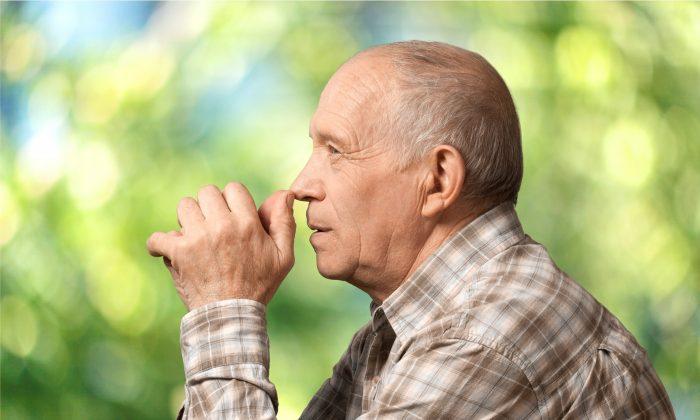In the previous 19 columns, I have said that humans can enjoy longevity with good health by fortifying the lungs.
In these columns, I have explained how fortifying the lungs can cure various diseases, including atopic allergies, asthma, arthritis, autoimmune diseases, and cancer. The proof I offer for my claim is the cases of more than 150,000 patients who have recovered from these conditions by cleaning their lungs with the Korean herbal formula I developed.
Objectivity and Subjectivity
Eastern medicine and Western medicine fundamentally differ in their perspectives on the human body and how to treat disease. While Western medicine views organs as separate, Eastern medicine views them as unified and as mutually influencing, or governing, each other. Thus diseases that seem to be related to a certain organ may actually have their origin in the health of another.Western medicine focuses on healing disease that has manifested and is mostly concerned with restoring the health of sick people. Eastern medicine is concerned both with restoring the health of sick people and also maintaining and improving the health of those who are healthy. Therefore, Western medicine focuses on the “how,” on the method of healing, while Eastern medicine looks at the “why,” and investigates the cause of disease.
Accordingly, although the ability of Western medicine to perform lifesaving surgeries and emergency treatments and fight infectious diseases has advanced markedly, it has great limitations when dealing with chronic diseases.
When it comes to diseases like diabetes, cancer, high blood pressure, atopic allergies, chronic inflammation, asthma, COPD, and autoimmune diseases, Western medicine mostly deems them incurable.
The Scientific Nature of Eastern Medicine
There is the perception that Western medicine is objective while Eastern medicine is subjective. This is quite misleading, as it gives rise to the belief that one is scientific while the other is not.The light quanta, which gave quantum theory its name, have since been accepted as bona fide particles and are now called photons. They are particles of a special kind, however, massless and always traveling with the speed of light.
The apparent contradiction between the particle and the wave picture was solved in a completely unexpected way, which called in question the very foundation of the mechanistic worldview—the concept of the reality of matter. At the subatomic level, matter does not exist with certainty at definite places, but rather shows “tendencies to exist,” and atomic events do not occur with certainty at definite times and in definite ways, but rather show “tendencies to occur.”
In the formalism of quantum theory, these tendencies are expressed as probabilities and are associated with mathematical quantities which take the form of waves. This is why particles can be waves at the same time. The are not “real” three-dimensional waves like sound or water waves. The are “probability waves.” ... We can never predict an atomic event with certainty; we can only say how likely it is to happen.
Quantum theory has thus demolished the classical concepts of solid objects and of strictly deterministic laws.
According to Capra, due to the advancement of modern physics, many Eastern ideologies and philosophies that were previously considered products of subjective imagination are gaining objective ground.Physics has also discovered that atoms can be in two places at the same time and that observation changes the behavior of sub-atomic matter.
Thus, the advancement of Western physics, which is founded on objectivity and is enabling scientists to approach the origin of matter, has discovered that matter is fundamentally subjective rather than objective.
Common Sense-Based Medical Science
In Eastern medicine, the lungs and the skin are directly connected, and a balance of heat and cold is necessary for health in the body. Excess heat is seen as a type of pathogen that will prevent the skin from eliminating toxins. Therefore, it is essential to eliminate accumulated heat in the lungs to thoroughly clean out waste matter from the body.Eliminating this waste matter cures atopic conditions like eczema in the same way running a stream of fresh water into a stagnant pool clears away decay. Cleaning out toxins to allow the body to heal is what I call a very common-sense approach.
However, modern medicine’s treatments for eczema often involve steroids, which make sweat glands and hair follicles close tightly, temporarily stopping waste from being discharged from the body. This kind of treatment is like covering the decayed pool with a layer of fresh water, but what’s underneath remains rotten and will eventually contaminate the fresh water.
Thus, although I have great respect for the enormous efforts modern medicine has put toward so-called evidence-based treatments, nonetheless, it is not able to break through the barrier of “incurable diseases,” and I am doubtful a cure for atopic conditions will be attained by such efforts.
The ultimate goal of both Eastern and Western medical science is to cure the diseases of mankind. However, we should not limit ourselves with the belief that this lofty aim is only attainable within the framework of Western medicine. Especially since history has shown that some of its conclusions defy common sense and later are totally disproven.
It is possible to achieve good clinical results by using terminologies and processes that are outside this framework.
I hope the Western medical community will be able to recognize that Eastern medicine is successfully combating “incurable” diseases in patients, even though Eastern doctors may not always be able to explain the effectiveness of treatments with the language of medical science.
So What Is Consistency Medicine?
After decades of treating patients, I have found that it is possible to unravel all diseases in the human body by enhancing the health of the lungs. I refer to this treatment of enhancing health through the lungs as consistency medicine.At Pyunkang Korean Medicine Hospitals, we have growth clinics where we offer treatments that help those with stunted growth because it is possible to increase a person’s height, actually grow bone, by fortifying the lungs.
The mechanism for this starts with the understanding from Eastern medicine that the lungs govern the health of the kidneys. In both Eastern and Western medicine, the kidneys are key to the health of the bones.
The kidneys regulate the amount of calcium and phosphorus in the body. However if the kidneys are weak, phosphorus can build up, causing the body to compensate by pulling calcium from the bones, which weakens them.
Another function of the kidneys is to filter blood to extract waste. When a person has chronic kidney disease and waste builds up, it commonly leads to metabolic bone diseases such as osteoporosis.
Therefore, the health of the lungs is essential for the maintenance and growth of bones.
In Eastern medicine, kidneys also govern the liver, so improving the health of the lungs also leads to better health in the liver.
The relationship between the heart and the lungs is like that of a married couple, and accordingly they are often referred to jointly with the term cardiopulmonary. In order to have optimal heart function, lung function must be maintained.
Thus the lungs are an important and leading organ in the body, and many diseases can be resolved by maintaining and fortifying them.







Friends Read Free